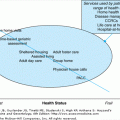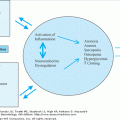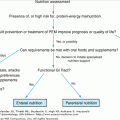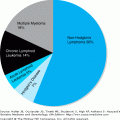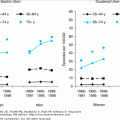Introduction
High blood pressure has the greatest impact on global attributable mortality of any other risk factor and accounts for the third leading cause of global burden of disease—64 million disability adjusted life years lost. The age-associated increase in blood pressure combined with the worldwide demographic increase in the aging population translates to an enormous emerging public health problem. In addition to the well-ascribed hypertension risk factors of cardiovascular disease and stroke, it is also a significant risk for chronic kidney disease, atrial fibrillation, congestive heart failure (CHF, including diastolic dysfunction), and cognitive impairment—each with a relative risk between 2.0 and 4.0. Lowering blood pressure by 10 mm Hg systolic and 5 mm Hg diastolic at age 65 years is associated with a reduction of up to 25% in myocardial infarction, 40% in stroke, 50% in CHF, and 10% to 20% overall decrease in mortality. Despite this knowledge, current rates of hypertension control are extremely low, especially among older women. In addition to illustrating the clinical importance of hypertension, these data are compelling in a call to improve both our knowledge concerning the mechanisms that underlie the age-associated increase in blood pressure to aid in its prevention as well as to make changes in the systems of care necessary to improve blood pressure control among those with hypertension.
Epidemiology
Although high blood pressure should not be construed to be a normal aspect of aging, there is clearly an age-associated increase in blood pressure and in the prevalence of hypertension. The National Health and Nutrition epidemiological surveys have documented that hypertension is a very prevalent condition among older Americans. Based on this study’s definition of hypertension—the average of three readings ≥140 mm Hg systolic and/or ≥90 mm Hg diastolic or those receiving an antihypertensive medication—the overall prevalence for hypertension among those aged 65 years or older ranges between 50% and 75%. For women aged 75 years and older, the prevalence exceeds 75%. Of note, there is an age–gender interaction in hypertension prevalence across age. At younger ages, prevalence rates are higher among men while above the age of menopause, there is a crossover when the prevalence in women surpasses that of men.
Another viewpoint on epidemiology is to examine the lifetime risk of developing hypertension as has been done in participants in the Framingham Heart Study. This study identified that among men and women participants who had normal blood pressure readings at age 55 years, nearly 85% developed Stage 1 or higher hypertension over 20 to 25 years of follow-up, their residual lifetime risk.
Classification
The current scheme to classify various levels of hypertension published by the Joint National Committee on Prevention, Detection, Evaluation and Treatment of High Blood Pressure, JNC 7 makes no adjustment for age. This classification scheme incorporates recent evidence that the cardiovascular risks associated with high blood pressure are continuous beginning at a level of 115/75 mm Hg and includes a prehypertension category (systolic from 120 to 139 mm Hg or diastolic 80–89 mm Hg). A former category known as isolated systolic hypertension was deleted from the current classification system. Instead, the conjunction that links the systolic and diastolic blood pressure columns in the classification table that defines each stage of hypertension was changed from “and” to “or.” Consequently, since isolated diastolic hypertension is so uncommon among older patients, one may correctly classify an older patient’s hypertension based entirely on the level of their systolic blood pressure (i.e. Stage 1, between 140 and 159 mm Hg systolic, and Stage 2, ≥160 mm Hg systolic).
Pathophysiological Characteristics
A single factor is unlikely to explain the cause of essential hypertension regardless of its age of onset. However, a number of age-related changes in physiology have been identified and summarized in Table 81-1 that likely contribute to the age-associated increase in blood pressure and in the prevalence of hypertension. Lifestyle factors such as obesity, especially central adiposity, being sedentary, and eating a diet high in sodium content are also contributors commonly identified among older individuals.
|
Homeostatic regulation of blood pressure within its normal range while continuously maintaining adequate cerebral perfusion requires intricate and dynamic coordination of several complex interacting physiological systems. Under resting conditions, despite age-related physiological changes that occur in these systems, older individuals experience little difficulty maintaining their blood pressure and cerebral perfusion. However, when this balance is placed at risk by perturbations imposed by the intravascular volume shifts that occur with upright posture or following a meal, or the stimulus of exposure to one or more vasodilating medications, the older patient is less able to adapt and significant declines in blood pressure and inadequate cerebral perfusion may ensue.
Arterial stiffness, especially in the large arteries, is the pathophysiological characteristic that best exemplifies geriatric hypertension. It is directly related to the increase in peripheral vascular resistance, a pathognomonic characteristic of hypertension in the elderly population. In addition to age and body mass index, insulin resistance also appears to be independently related to increased arterial stiffness. The connection between arterial stiffness and the type of hypertension most commonly encountered in older patients, namely, systolic hypertension with high pulse pressure.
Beyond this structural change in the arteries, the regulation of vascular resistance is also affected by age-related changes in the autonomic nervous system and in the vascular endothelium. There is an age-associated decline in the sensitivity of the arterial baroreceptor. This effects the regulation of vascular resistance in two important ways. First, a larger change in blood pressure is required to stimulate the baroreceptor to invoke the appropriate compensatory response in heart rate. This also contributes to the age-related increase in blood pressure variability. Second, the decrease in baroreceptor sensitivity leads to relatively greater activation of sympathetic nervous system outflow for a given level of blood pressure. An age-associated increase in sympathetic nervous system activity has been demonstrated by higher plasma norepinephrine levels, rates of norepinephrine release derived from tracer kinetic studies, and muscle sympathetic nerve activity. If the increased activity of the sympathetic nervous system did not result in a corresponding decrease in adrenergic receptor responsiveness, one would expect a net increase in cardiovascular adrenergic responses. However, many studies have demonstrated age-associated declines in beta-adrenergic receptor chronotropic, inotropic, and vascular responses as well as alpha-adrenergic vasoconstrictor responses. Consequently, in normotensive older individuals, the increase in sympathetic nervous system activity does not lead to an overall increase in vascular tone and appears not to explain an age-related increase in blood pressure. In contrast, in older hypertensive subjects, arterial alpha-adrenergic receptor responsiveness has been shown to be elevated in relation to their high level of sympathetic nervous system activity possibly contributing to their higher blood pressure.
Regulation of vascular resistance by the vascular endothelium is also changed in relation to age. Endothelial dysfunction demonstrated by a decrease in the production of endothelial-derived nitric oxide has been identified to accompany aging as well as hypertension. Impaired nitric oxide–mediated vasodilation is a potential contributor to the age-related increase in peripheral vascular resistance.
Age-related changes in renal function and in particular in renal regulation of sodium balance may also contribute to an increase in blood pressure. Decreased renal blood flow and glomerular filtration rate impair the aging kidney’s ability to excrete a sodium load. These renal changes in the regulation of sodium balance create a tendency for sodium retention. This likely plays a part in the finding that a high proportion of older hypertensive individuals, perhaps as high as two-thirds, are characterized as having salt sensitivity. Salt sensitivity is operationally defined as an increase in mean arterial blood pressure, commonly 5 mm Hg or more, during a high compared to a low dietary sodium intake.
Aging also alters the renin–angiotensin–aldosterone system in ways that may contribute both to elevated blood pressure as well as sodium sensitivity. In general, older hypertensive subjects are characterized by having low levels of plasma renin activity. The role of aldosterone as a contributor to elevated blood pressure, aside from overt primary hyperaldosteronism as a secondary cause of hypertension, in the age-related increase in blood pressure is being actively investigated. A direct relationship between plasma aldosterone levels within the physiologic range of normal and the future development of hypertension has been shown in normotensive individuals. Since higher levels of aldosterone have also been linked with central obesity, vascular stiffness, blunting of baroreceptor sensitivity, impaired endothelial function, insulin resistance, and sodium sensitivity, it seems very possible that aldosterone may prove to be a unifying factor that accounts for many of the age-related changes in these physiological features that also contribute to elevated blood pressure.
Abnormalities in glucose homeostasis and, in particular, resistance to insulin’s effects on carbohydrate metabolism are evident with aging as well as in hypertension. Insulin resistance has been grouped together with a constellation of other characteristics—obesity, central adiposity (commonly measured as increased waist circumference), hyperlipidemia, and hypertension—referred to as the metabolic syndrome. Studies that have been careful to control for the confounding factors of obesity, central adiposity, physical inactivity, and hypertension demonstrate that age is not independently associated with insulin resistance. Therefore, although many older hypertensive individuals will be insulin resistant, and many may have impaired glucose tolerance if not meet criteria for type 2 diabetes, an isolated age-related change in insulin resistance appears not to directly contribute to elevated blood pressure in aging.
Diagnostic Evaluation
The first and most critical step in the diagnostic evaluation of hypertension among older individuals is the accurate measurement of blood pressure. In addition to the standard measurement instructions dictating cuff size and type of instrument, several factors regarding appropriate blood pressure measurement deserve emphasis. First, as a result of the observation that blood pressure is more variable in older people, the dictum that “hypertension should never be diagnosed on the basis of a single blood pressure measurement” is especially true. Studies have documented that there is considerable misdiagnosis of hypertension among older people. For example, up to one-third of subjects who were receiving antihypertensive therapy when they enrolled in the Systolic Hypertension in the Elderly Program failed to meet entry blood pressure criteria for the study after their medications had been withdrawn. The diagnosis of hypertension should be based on the average of a minimum of nine blood pressure readings that have been obtained on three separate visits.
Second, there is a strong association between arterial stiffness and the presence of an auscultatory gap. For this reason, if the blood pressure cuff is initially not inflated to a pressure above the true systolic pressure but falls within the range of the individual’s auscultatory gap, the systolic pressure will be underestimated. One may palpate the systolic pressure by recording the pressure at which the radial artery pulse is first appreciated as the cuff is deflated to ensure that the true systolic pressure is obtained.
Third, while not directly related to the diagnostic classification of hypertension, another important factor in blood pressure measurement is to always obtain supine and upright standing readings to determine if there is evidence for an orthostatic or postural decrease in blood pressure. The commonly used definition of postural hypotension is a decrease in systolic blood pressure of 20 mm Hg or more from supine to upright positions within the first several minutes of standing. Elevated supine systolic blood pressure is one of the strongest predictors of postural hypotension. The presence of postural hypotension is an important risk factor for falls and may be exacerbated by almost all antihypertensive medications. Therefore, identifying those patients with postural hypotension at the outset and during therapy is of critical importance.
Fourth, some individuals may have in-office blood pressure readings that are markedly elevated compared with their in-home, self-taken readings, commonly referred to as white coat hypertension. For these individuals, it is worth considering further evaluation with carefully taken home readings using an appropriately calibrated instrument or obtaining 24-hour ambulatory monitoring. The 24-hour blood pressure monitor approach has an added advantage of defining both the daytime and the nocturnal as well as the overall average blood pressure values. The 24-hour average provides a good measure of the blood pressure load and correlates with indicators of target organ damage. The circadian blood pressure pattern may also be informative in that individuals who fail to decrease their nocturnal blood pressure by at least 10% relative to their daytime blood pressure, referred to as nondippers, have been shown to have greater cardiovascular disease risk compared to those with the normal, dipper pattern.
A final point concerning blood pressure measurement is to emphasize the primacy of systolic over diastolic blood pressure as the pressure that confers the most significance with respect to cardiovascular risk. Moreover, the pulse pressure, the difference between systolic and diastolic pressure, appears to outweigh either systolic or diastolic blood pressure as a cardiovascular risk factor. Based on the pathophysiology of vascular stiffness discussed above, elevations in both systolic and pulse pressure are the expected correlates of increased vascular stiffness.
Similar to younger patients, more than 90% of older hypertensive patients have essential hypertension. A diagnostic evaluation for secondary and potentially reversible causes of hypertension should be completed following the standard guidelines that have been developed for younger patients. There are several factors that deserve special attention in an older patient population. First, since the majority of hypertension among this population is systolic hypertension, older patients who present with primarily diastolic hypertension merit a careful evaluation with a focus on a renovascular cause. This is especially true for those who present with relatively abrupt onset of diastolic hypertension. Second, older patients are apt to be receiving a number of medications, some of which could be contributing to elevated blood pressure. A complete medication review is warranted to search for medications that may be implicated, e.g., corticosteroids and nonsteriodal anti-inflammatory drugs including COX-2 inhibitors. Third, the prevalence of sleep apnea among older patients with hypertension is high and may be an important pathophysiological explanation for their elevated blood pressure. Fourth, although the incidence of pheochromocytoma is rare, there is a suggestion from an autopsy study that the incidence of this condition increases with increasing age.
The evaluation should also include a determination of target organ damage and a cardiovascular risk factor assessment and identification of comorbid conditions that may impact antihypertensive drug selection. Determining the extent of hypertension-related target organ damage may be complicated by the confounding effects of concurrent age- or disease-related changes. It is important to assess whether the patient has evidence of renal impairment, proteinuria, hypertensive retinopathy, electrocardiographic abnormalities or left ventricular hypertrophy. An assessment of overall cardiovascular risk—smoking history, alcohol intake, dietary salt and fat intake, and level of physical activity—should also be completed. Older patients presenting with hypertension are likely to have other conditions included among a group of abnormalities described collectively as the metabolic syndrome. Therefore, it is important to consider the coexistence of abdominal obesity; insulin resistance, impaired glucose tolerance, or overt type 2 diabetes mellitus; and hyperlipidemia and incorporate screening for these conditions into the diagnostic evaluation.
